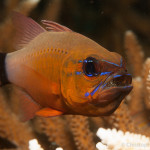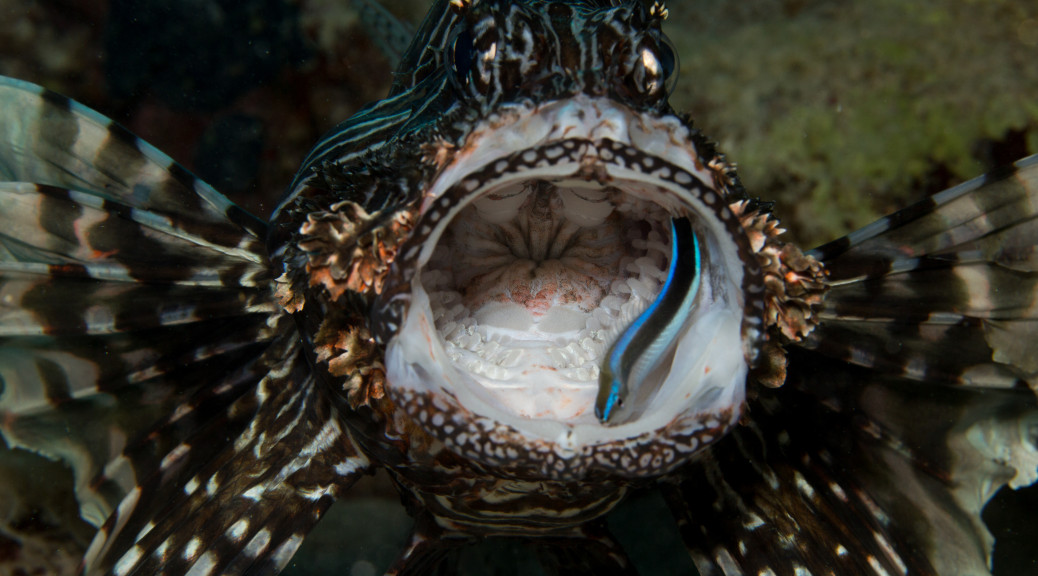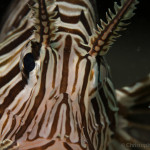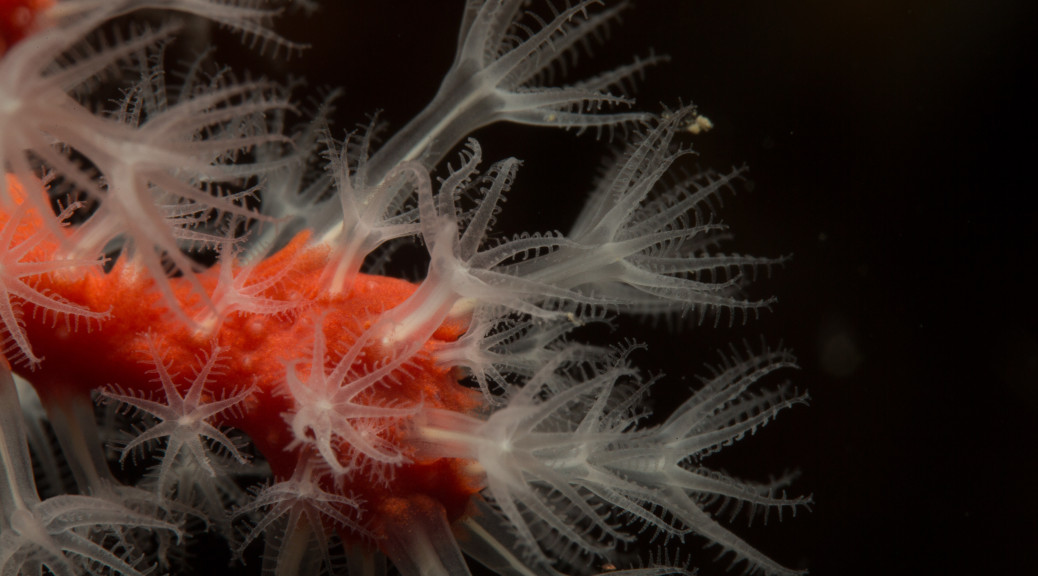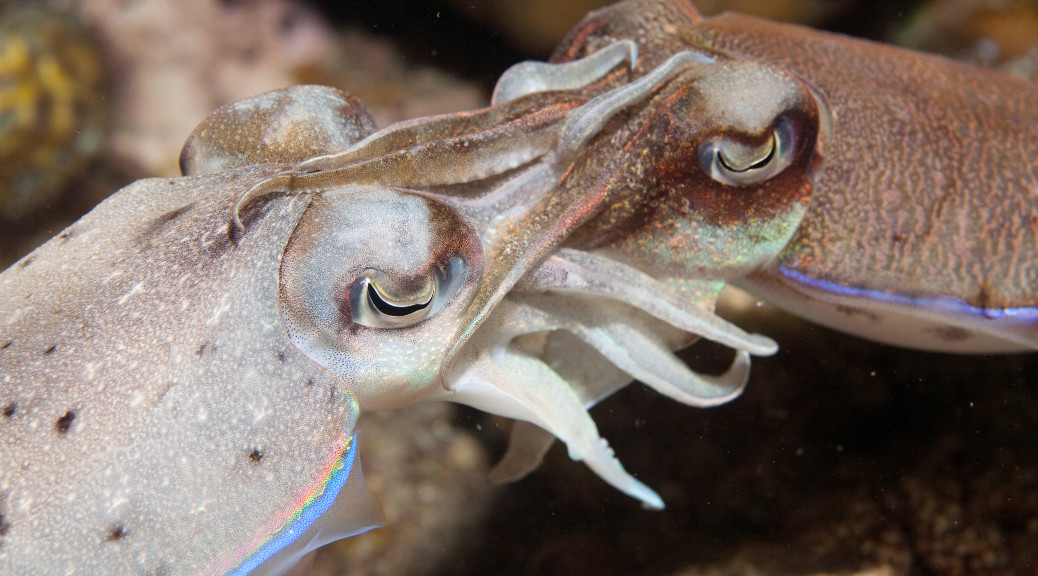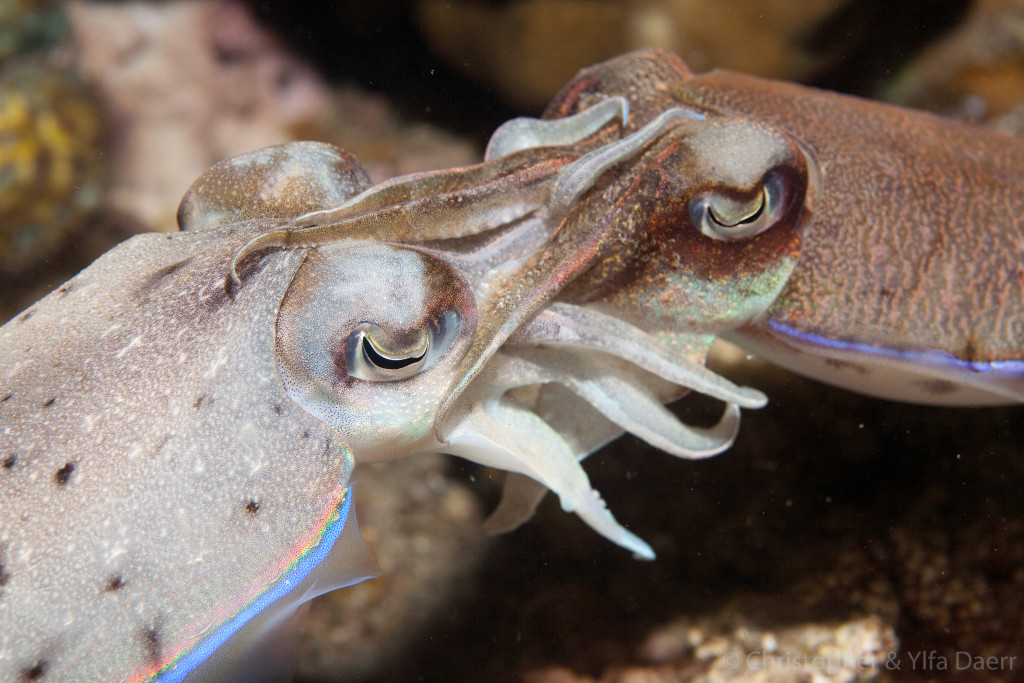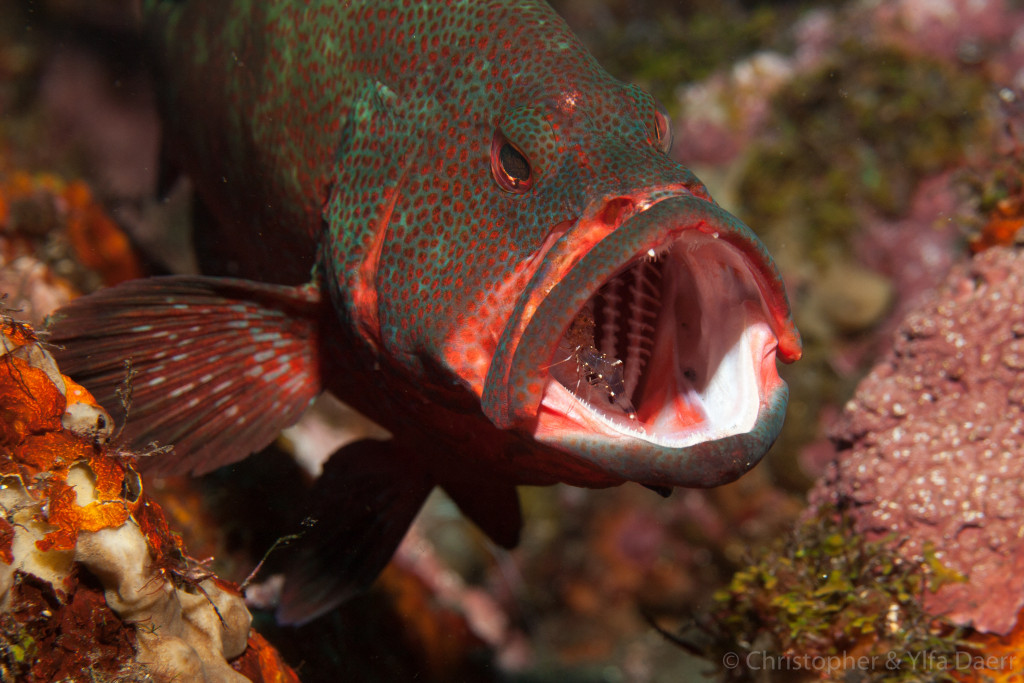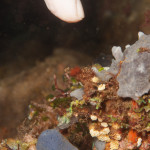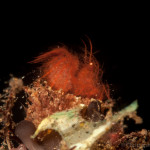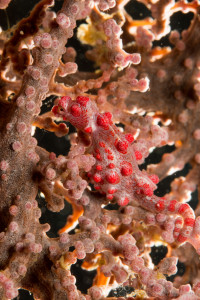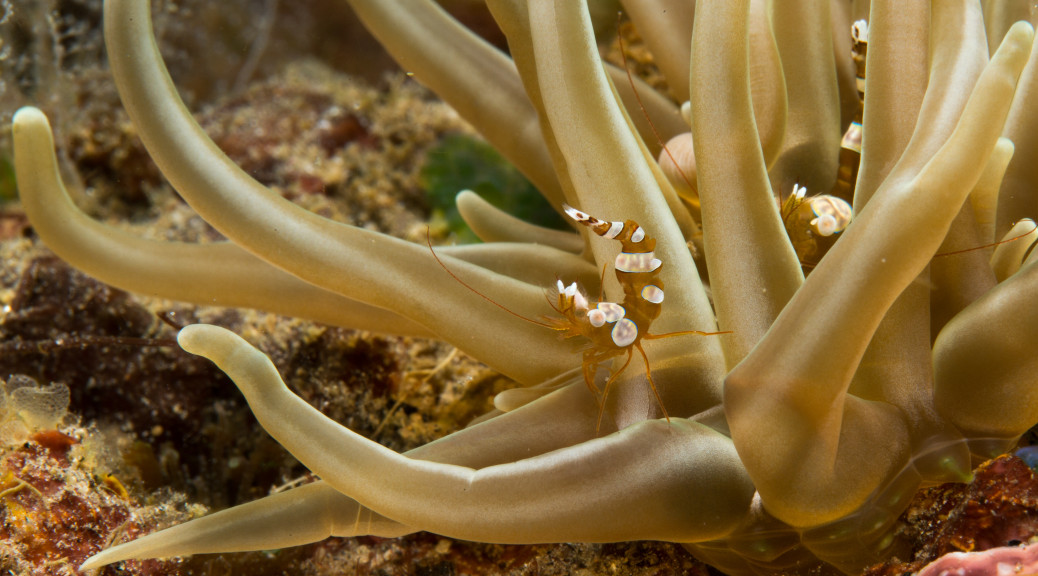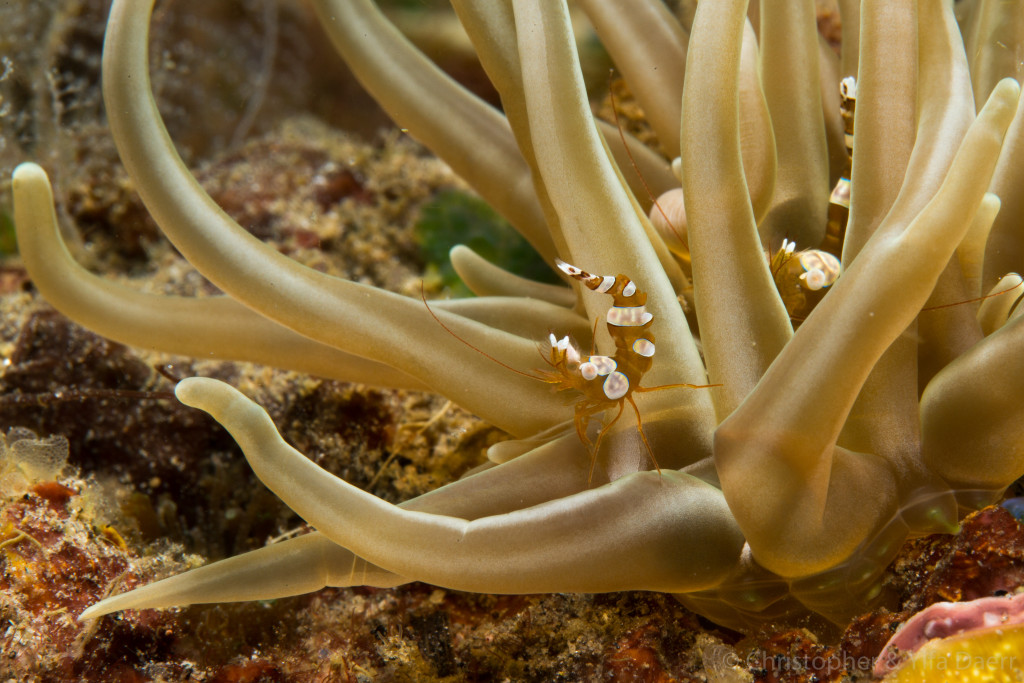Another shot from beautiful Bali showing a soft coral crab (Hoplophrys oatesi) making its way between the corals.
The picture’s background was intentionally trimmed to pure black by using 1/100 sec at f/22 – and getting enough flash power to make this little creature shine.
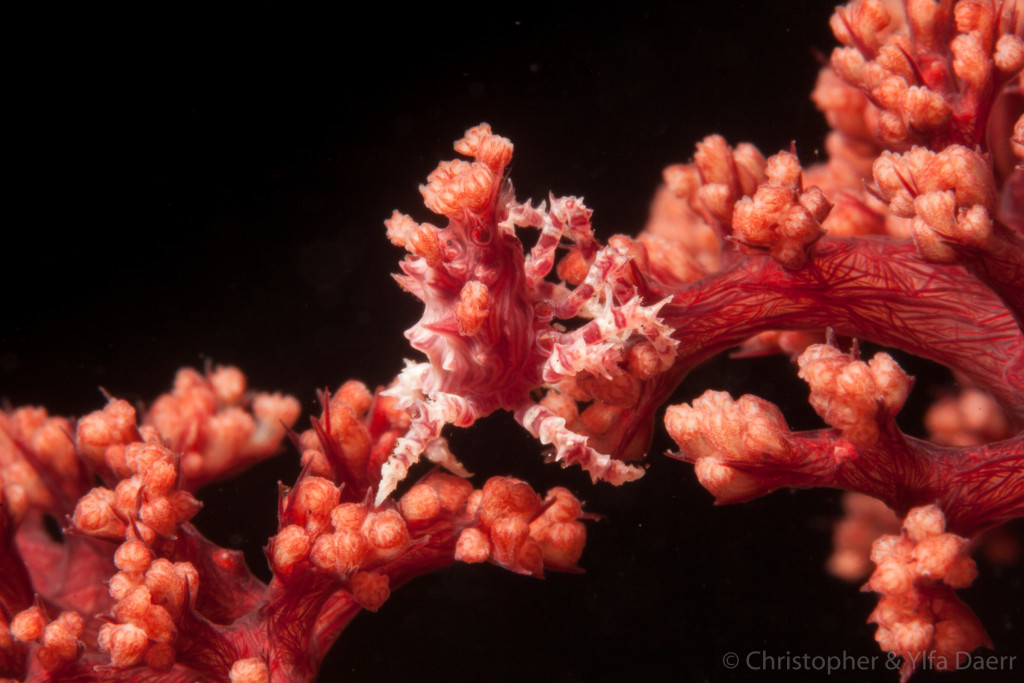
Wayan, our local dive-guide spotted the crab. – I honestly wouldn’t have noticed it in its perfect camouflage. Another example, why diving with local guides pays off.



